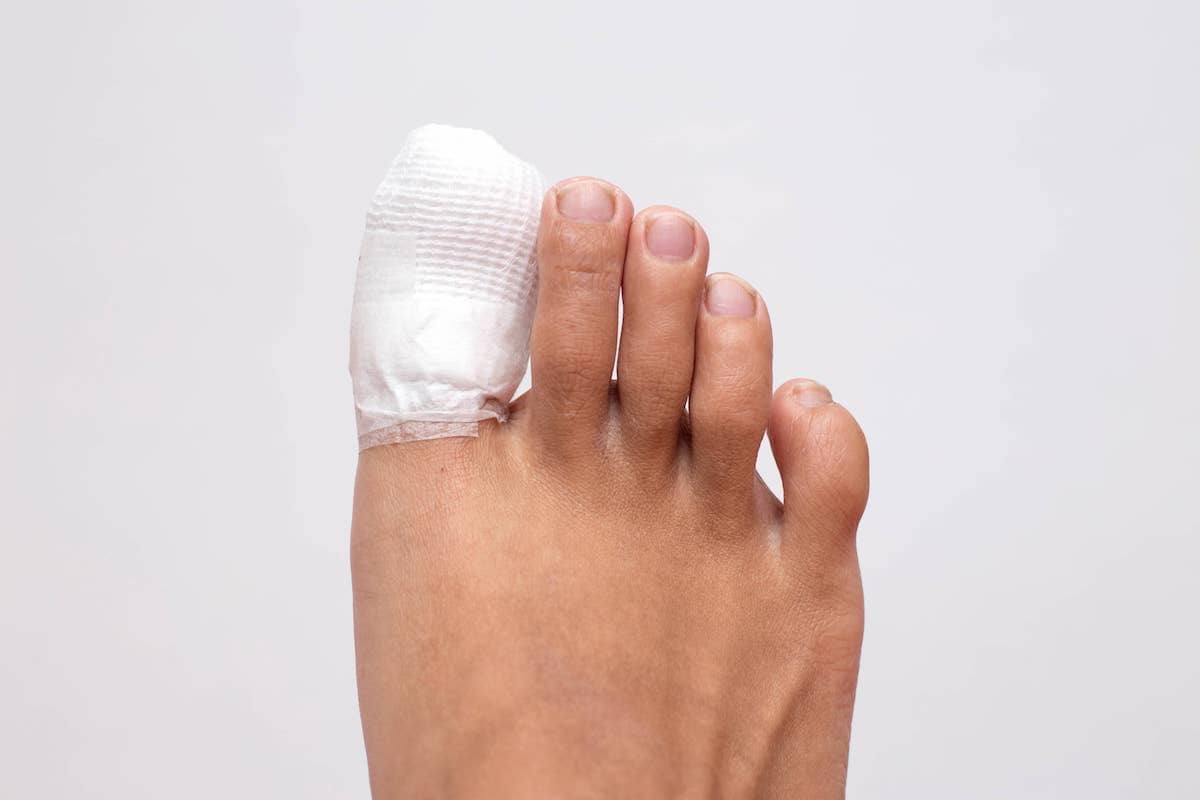
An ingrown toenail is one of the most common – and painful – foot ailments we see at JAWS Podiatry.
While ingrown toenails often heal on their own, many cases require treatment by an experienced podiatrist to fully address the problem.
The Nature of the Problem With Ingrown Toenails
When a toenail digs into your skin it becomes ingrown and can cause a tremendous amount of pain.
Shoe pressure, fungal infections, and clipping your toenails improperly can all lead to ingrown toenails.
You can temporarily relieve discomfort by soaking your foot in a solution of lukewarm water and salt. However, that won’t take care of the underlying condition.
If left untreated, a persistent ingrown toenail can have serious health consequences, including infections that can migrate to the tissue and bone near the nail.
Our experienced podiatrists have several options for treating ingrown toenails.
Which one will be recommended for you depends on the nature and seriousness of the condition, and whether it is an isolated issue or one that arises repeatedly.
The 3 Main Ways We Treat An Ingrown Toenail
- Lifting the nail. For nails which are only slightly ingrown, we can gently lift the ingrowing nail edge to separate it from the underlying skin, thus relieving the pain. We then place cotton, dental floss, or a splint under the nail to keep it away from the skin so that it can grow above the skin edge.
- Partially removal of the nail. If your ingrown toenail has progressed to the point of having redness, pain, and pus, we may choose to remove the ingrown part of the nail. This procedure may involve the use of a local anesthetic to numb your toe as the nail is removed.
- Full removal of the nail and tissue. For most people, having an ingrown toenail is an isolated incident and one that can largely be prevented with proper foot care. For some people, however, an ingrown toenail on the same toe can be a repeating, chronic problem. In such cases, we may recommend not only removing the nail but the underlying tissue as well using a chemical or fine laser.
After any of the foregoing procedures, you will need to take care of the effected toe to prevent infection and encourage healing.
This may involve cleaning the wound and soaking in Epsom salts and/or anti-microbial soap every day for a couple of weeks, as well as the application of an antibacterial cream and small bandage.
We also recommend wearing open-toe or loose-fitting shoes to keep pressure off the toe while it heals.
Call Our Foot and Ankle Specialists To Treat Ingrown Toenails
If you are suffering from an ingrown toenail or are having any other problems with your feet or ankles, our experienced and skilled podiatrists can help!
While our foot and ankle specialists will explore all possible alternatives to see if a non-surgical solution can address your problem, we are prepared when necessary to address your issues with surgery performed with the highest standard of care.
Please contact us today at (954) 922-7333 to schedule an in-person or virtual consultation.
- The Life-Changing Power of Cosmetic Foot Surgery - February 27, 2023
- What Are The Most Common Pediatric Foot Conditions? - October 5, 2020
- 4 Important Things To Know Before Having Foot Surgery - September 21, 2020



